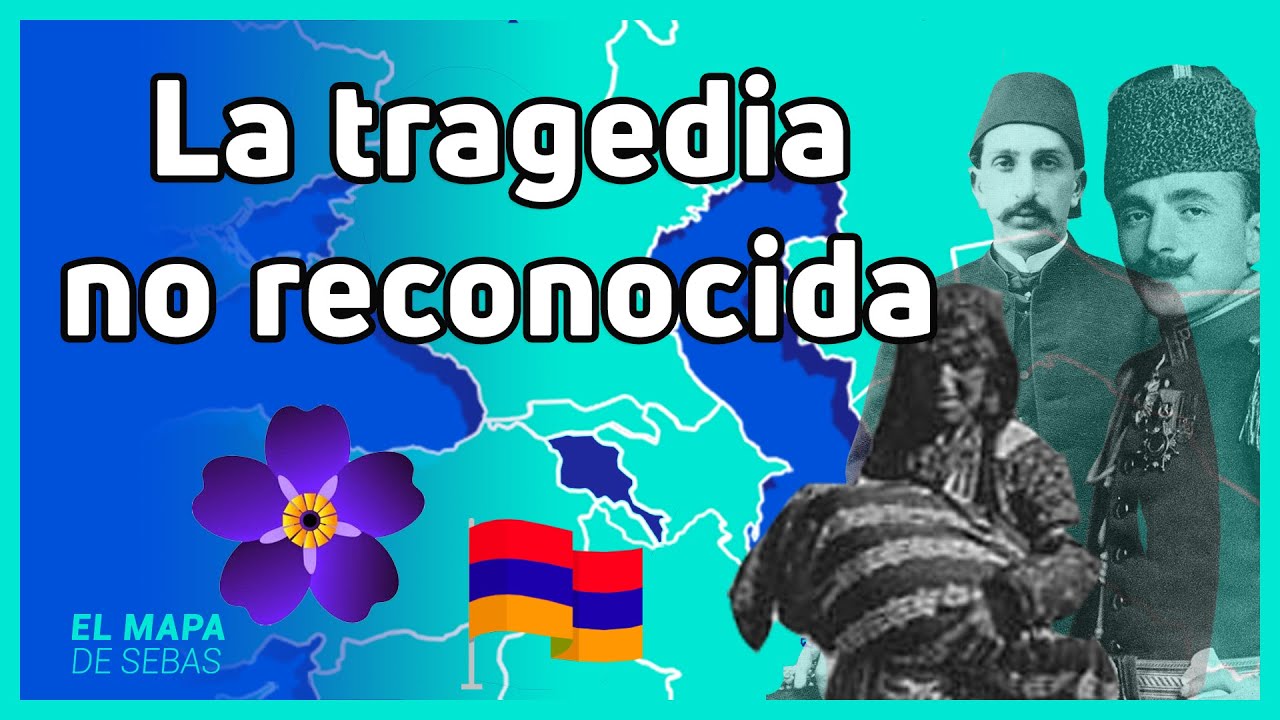The Promise (2016) | Based on a True Story
Summary
TLDRThe video script explores the Armenian Genocide through the lens of historical fiction, aiming to raise awareness. It covers the Ottoman Empire's expansion, the Armenian struggle for autonomy, and the subsequent genocide under Sultan Abdul Hameed II. The script also discusses the international response, the role of the Young Turks, and the impact on Armenians, Greeks, and Assyrians. The film's narrative, focusing on a love triangle, serves as a vehicle to depict the atrocities, ending with the protagonists' escape to America, highlighting the ongoing denial and the importance of remembering this dark chapter in history.
Takeaways
- 🎬 The film 'The Promise' is a historic fiction designed to raise awareness about the Armenian Genocide.
- 🗺 Armenia was historically split between the Ottoman Empire and Persia, leading to a complex political situation.
- 🕌 The Ottoman Empire followed religious rules called 'millet' which allowed for some tolerance of non-Muslims, including Armenian Christians.
- 📉 The Ottoman Empire faced internal rebellions and attempted reforms, which included the Armenians creating their own national assemblies.
- 🔄 The Congress of Berlin and subsequent treaties led to further territorial losses for the Ottoman Empire and did not resolve issues for Armenians.
- 🛑 Sultan Abdul Hamid II resisted reforms, leading to increased resistance and massacres of Armenians and other Christians.
- 💥 The Armenian Revolutionary Federation (ARF) and other groups resisted Ottoman rule, leading to further conflict and massacres.
- 🌍 The 'Young Turks' took power and attempted reforms, but World War I and the subsequent Armenian deportations and massacres occurred under their rule.
- 🏛️ The genocide included mass deportations, forced labor, and extermination campaigns, affecting not only Armenians but also Greeks and Assyrians.
- 📚 The Armenian Genocide is one of the most studied genocides in history and has been a subject of extensive literature and debate.
- 🎭 'The Promise' uses a fictional narrative to depict the genocide, focusing on a love triangle as a plot device to explore the historical events.
Q & A
What is the primary goal of the film 'The Promise'?
-The primary goal of the film 'The Promise' is to elicit awareness of the Armenian Genocide and to serve as an introduction to the historical event.
How was Armenia divided during the expansion of the Turkish Ottoman Empire?
-During the expansion of the Turkish Ottoman Empire, Armenia was split between the Ottoman Empire and Persia as a result of wars and territorial disputes.
What was the status of Armenians within the Ottoman Empire?
-Armenians were considered Dhimmi, a protected class of non-Muslims within the Islamic caliphate of the Ottoman Empire, and were subject to a higher tax burden and governed by their own insular government called a patriarchy.
What were the consequences of the Ottoman Empire's defeat by the Russian Empire?
-The defeat led to the Russian Empire taking control of Eastern Armenia and increased rebellions within the Ottoman Empire due to stagnation and failed reforms.
What was the significance of the Congress of Berlin in relation to the Ottoman Empire?
-The Congress of Berlin was assembled to deal with the 'Eastern Question' and resulted in the creation of the Balkan states and a mass population exchange between Bulgaria and the Ottoman Empire.
Who were the 'Three Pashas' and what role did they play in the Armenian Genocide?
-The 'Three Pashas' were leaders of the CUP (Committee of Union and Progress) who were later infamous for initiating and carrying out the systematic extermination campaign against Armenians during World War I.
What was the role of the Armenian Revolutionary Front (ARF) during the Ottoman Empire?
-The ARF was a resistance organization that began arming partisans and organizing rebellions against the Ottoman Empire, which led to massacres and further rebellions.
How did World War I impact the situation of Armenians in the Ottoman Empire?
-World War I led to mass deportations and an extension of the extermination attempts against Armenians by the Ottoman Empire, as they were blamed for Ottoman defeats.
What was the 'Teddy's Law' and its relation to the Armenian Genocide?
-The 'Teddy's Law' was a reform package brought to the Armenians by the CUP that would have given them autonomous provinces with European oversight, but it was not implemented due to the outbreak of World War I.
How did the end of World War I affect the fate of Armenia and Armenians?
-The end of World War I led to the dissolution of the Ottoman Empire, with Turkey controlling Western Armenia and the formation of an Armenian Republic in Eastern Armenia, which was later subsumed by the USSR.
What is the significance of Dr. Raphael Lemkin in relation to the Armenian Genocide?
-Dr. Raphael Lemkin, a law professor at Yale University, is credited with coining the term 'genocide' and was instrumental in drawing attention to the Armenian Genocide as a precursor to the Holocaust.
Outlines

هذا القسم متوفر فقط للمشتركين. يرجى الترقية للوصول إلى هذه الميزة.
قم بالترقية الآنMindmap

هذا القسم متوفر فقط للمشتركين. يرجى الترقية للوصول إلى هذه الميزة.
قم بالترقية الآنKeywords

هذا القسم متوفر فقط للمشتركين. يرجى الترقية للوصول إلى هذه الميزة.
قم بالترقية الآنHighlights

هذا القسم متوفر فقط للمشتركين. يرجى الترقية للوصول إلى هذه الميزة.
قم بالترقية الآنTranscripts

هذا القسم متوفر فقط للمشتركين. يرجى الترقية للوصول إلى هذه الميزة.
قم بالترقية الآنتصفح المزيد من مقاطع الفيديو ذات الصلة

Armenian Genocide | World History Project

☠️ ¿Por qué ocurrió el GEN0C1D10 ARMENIO? 🇦🇲 - El Mapa de Sebas

Mass Atrocities in the 20th Century [AP World History Review—Unit 7 Topic 8]

El genocidio contra el pueblo armenio [Programa Educación y Memoria] - 2022

The Armenian Genocide

Por qué muchos conflictos de hoy hunden sus raíces en el Imperio otomano
5.0 / 5 (0 votes)
